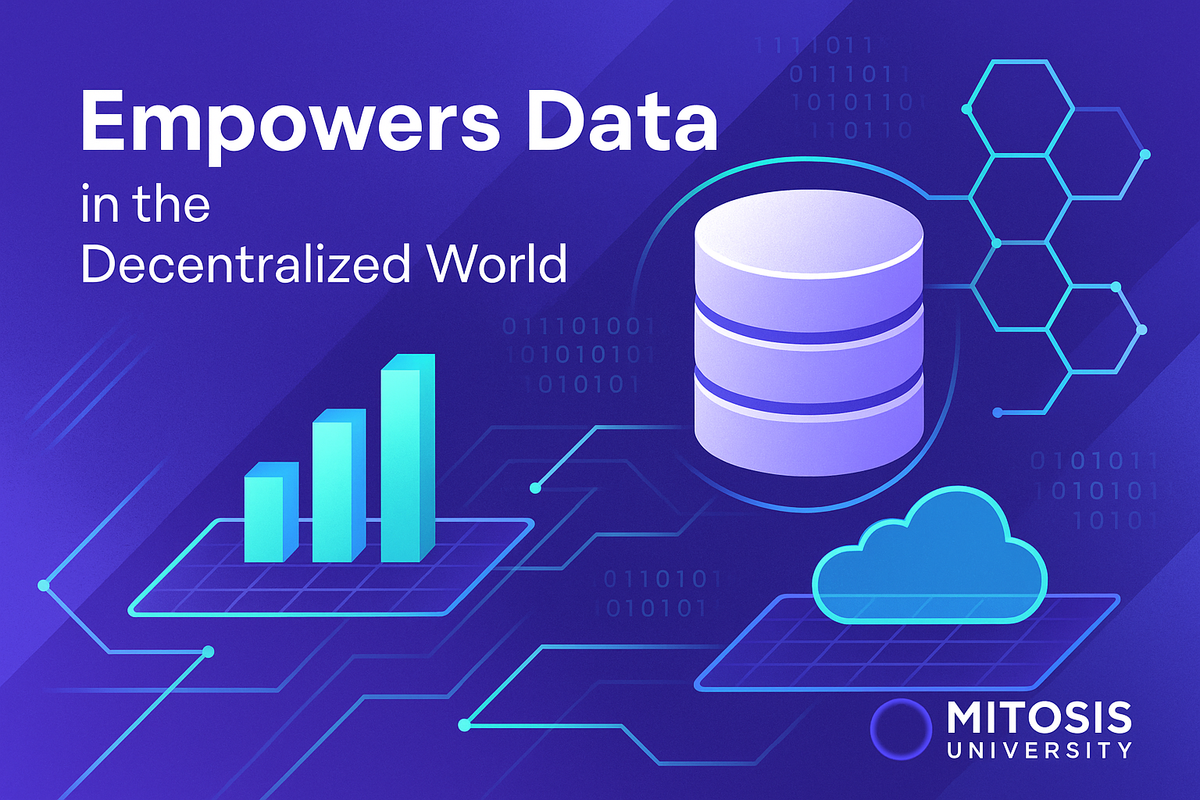Irys Empowers Data in the Decentralized World

Data is the lifeblood of our digital world—but in most decentralized systems, it’s either inert or expensive. Blockchains have offered secure storage and smart contracts, yet they still treat data as static baggage: something to be preserved, not something to act, respond, or evolve.
Irys changes that. As the world’s first programmable datachain, Irys doesn't just store data—it activates it. This paradigm shift allows data to carry logic, enforce access controls, accrue royalties, and more, making it a first-class citizen in decentralized applications.
In this article, we’ll explore how Irys redefines data in the blockchain world through its programmable infrastructure, novel consensus mechanisms, and scalable architecture.
From Passive Storage to Programmable Data
The Birth of a Programmable Datachain
Traditional blockchains prioritize transaction execution over data management. Irys bridges this gap by making data both permanent and programmable. At the heart of this is IrysVM, a virtual machine that lets smart contracts interact directly with data, enabling use cases like programmable ownership, automated royalties, and embedded access rules.
With this, data becomes more than a static record—it becomes a dynamic entity that can drive actions across decentralized ecosystems. Developers can now build applications where the data itself can enforce rules and trigger logic, all at a fraction of typical execution costs.
Solving Longstanding Blockchain Challenges
Irys addresses the core limitations holding back blockchain-based data systems:
- Fragmented Architectures: Instead of juggling separate platforms for execution and storage, Irys offers a unified network that supports both natively.
- Static, Immovable Data: Through its multi-ledger design, data transitions smoothly from validation to permanent, programmable storage.
- Unpredictable Pricing: Storage costs are stabilized using an Exponential Moving Average (EMA) and anchored to physical storage costs, making them predictable and sustainable.
- Centralization Risks: Irys introduces a hybrid Proof of Work (PoW) and Proof of Stake (PoS) consensus, placing hard caps on mining dominance and incentivizing long-term, verifiable storage.
The Architecture Behind Irys
A Layered, Efficient Infrastructure
Irys is built for scalability, performance, and accountability:
- Multi-Ledger Architecture: Data first lands in the Submit Ledger for validation, then graduates to the Publish Ledger for long-term permanence. This ensures integrity while enabling flexible storage timelines.
- Partitions and Matrix Packaging: Each 16TB partition is cryptographically structured using Matrix Packaging, breaking data into verifiable layers to ensure fast validation and prevent tampering.
- Efficient Sampling: To verify storage integrity, Irys uses random 200MB sampling across partitions daily. This reduces hardware strain and keeps miner costs low while ensuring data is reliably held.
Smart Economics, Real Accountability
Miners and stakers in Irys are economically tied to their performance:
- Mining Rewards are earned by maintaining access to historical data, not just by solving hash puzzles.
- Staked IRYS Tokens can be slashed if miners fail storage commitments, enforcing high availability and honesty.
- Predictable Costs for storage remove the volatility often seen in decentralized systems.
The network also includes Bundlers, which allow developers to package multiple user uploads into a single, cost-efficient transaction—lowering barriers for applications to subsidize user interactions.
A Modular, Future-Ready System
Irys is built with separation of concerns in mind:
- Multiple Blocklanes optimize the network by isolating compute, data, and value transactions, reducing congestion and enhancing scalability.
- Irys Gateway makes data discoverable and accessible through GraphQL/REST APIs and smart caching, allowing developers and users to query information efficiently.
Conclusion
Irys is more than a blockchain—it’s a platform that makes data intelligent. By integrating programmability at the storage layer, it transforms passive data into active agents within decentralized applications. Through a carefully engineered mix of cryptographic assurance, economic incentives, and architectural innovation, Irys sets the stage for a new class of dApps that are data-driven by design.
Key Takeaways
- Programmable data unlocks powerful new application models, from self-enforcing media rights to dynamic access control.
- Irys eliminates the need to stitch together disjointed storage and compute platforms.
- Its hybrid PoW/PoS consensus, efficient sampling, and modular design create a high-integrity, cost-effective, and scalable ecosystem.
Looking Ahead
What happens when data itself can think, act, and enforce? Irys invites developers, creators, and innovators to explore that question. As decentralized systems evolve, programmable data may be the missing link that transforms them from ledgers of the past into ecosystems of the future.



Comments ()